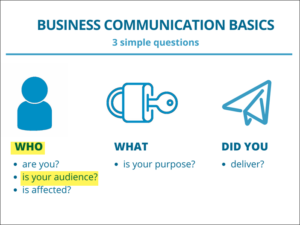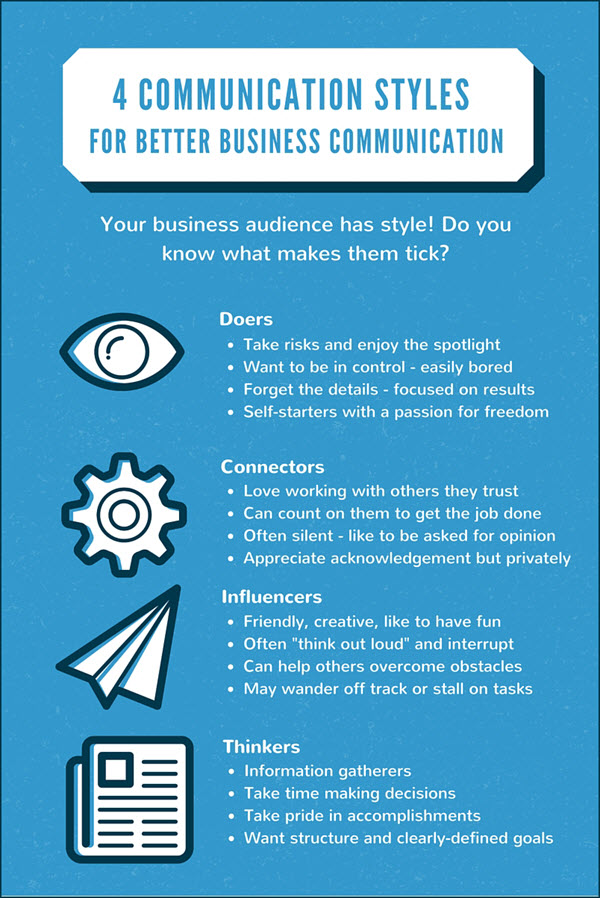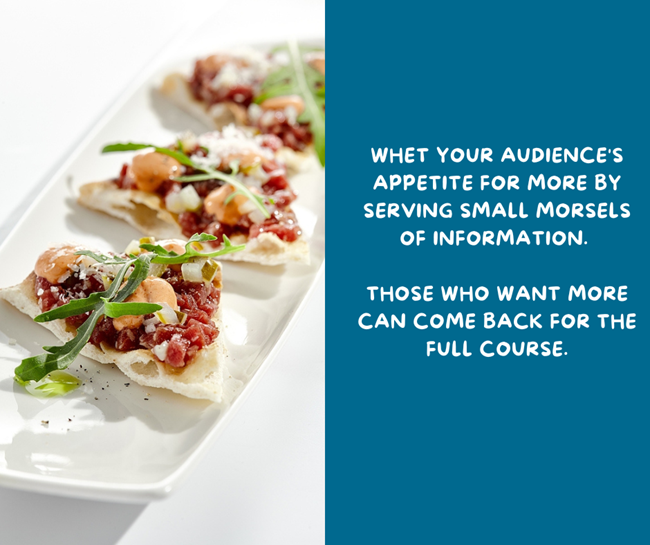Part of the Who are You series

Margo looked over her audience and took a deep breath. So many people. Most she had never met.
- We all have layers to our personality and our own communication styles and preferences.
- How did she communicate to a roomful of differences?
- Can you relate to Margo’s dilemma?
In the Who is Your Audience series, you will receive ideas on what makes your audience tick. And a few tips for better communicating with your audience. You may learn a thing or two about your own communication style, too.
 Your Audience Has Style
Your Audience Has Style
A Google search of “communication styles” produced 492 million results, including the following.
- 3 (4, 5…) Communication Styles
- Passive, Aggressive, Assertive
- Linear vs Circular, Direct vs Indirect, and so on
That’s a lot of layers to peel.
Regardless of the style you choose to follow, understanding your audience is what your business is all about. Marketing 101 stresses identifying who they are, where they hang out, and what they like or need.
However, I thought we could explore your audience communication style and how that affects your business communication. You game?
4 Communication Styles for You and Your Audience
To make this simple for you (and you know how I love simple), I created the graphic below to define four communication styles.
- Look at each category and think about someone you know who fits the description.
- A good place to start is with a project team you worked with.
- Picturing the individual helps you relate to how that style works.

You may be thinking (or not), how can I adapt my business communication to match four unique styles?
Here are three suggestions.
Suggestion #1 – Separate function from people.
If you take a quick look at the bullet points for each communication style, you may notice something. Each have unique ways of performing a function and interacting with others.
In studies on leadership styles, smarter people than me call that task or relationship oriented.
Task-oriented
Take Doers and Thinkers as an example. They both put emphasis on getting results. They simply go about it differently.
- Doers choose their own route to results.
- Thinkers need facts, figures, and deadlines.
Relationship-oriented
Influencers and Connectors, on the other hand, like to consider the people side a bit more.
- Other opinions can influence them.
- They probably will not challenge conclusions.
How to Apply This Information
Knowing the communication style of your audience helps you adjust your delivery for best results. For example:
- If you are targeting a just the facts CEO, use task-oriented tricks to grab his or her attention – such as, an executive summary that contains brief and to-the-point content.
- For a relationship-oriented human resources professional, share case studies that highlight the human side of success.
Before I go any further, allow me to interject a huge disclaimer.
Knowing your audience means identifying individual characteristics – not preconceived labels.
A CEO can be warm and fuzzy, too.
So, don’t worry about remembering the labels – Doers-Connectors-Influencers-Thinkers. Instead, figure out the communication style of the individuals you want to attract.
Networking and developing strong business relationships are invaluable in learning communication preferences.
- Ask colleagues who have worked with your targeted recipients what’s worked for them.
- When targeting the C-suite, seek out middle management for insight.
- Follow targeted markets on social media or at industry events for clues on styles.

Suggestion #2 – Have something for everyone.
Even if you target the C-suite, needs may be different (think Chief Marketing Officer versus Chief Information Officer). Knowing what style to use is complicated by communicating to individuals you have never met.
So, what do you do? Go back to those styles.
- Have the detailed documents for the individuals who crave it.
- Create brief, visual documents for the grab-and-go group.
My most viewed SlideShare presentation is Slides and Handouts: The Perfect Marriage. Recently, I updated it to a video format.
Both are an example of separating the details from the highlights.
- The presentation is the tale of Simplicity Slide and Tex T. Handout.
- Their perfect marriage separated too much text from slides.
- Handouts provided the details.
- And they lived happily ever after.
Other Ways to Please Personalities
In addition to slides and handouts, you have other options for developing something for everyone.
- Executive summaries, Introductions, or Conclusions that summarize key points in reports.
- Table of Contents in ebooks and longer posts for a snapshot of what the content contains.
- Bullets, graphs, and other visual depictions to capture the highlights.
- Human interest stories like case studies, biographies, and interviews for the people person.

Suggestion #3 – Repurpose your business communication.
Raise your hand if you heard about the value of repurposing your business communication (or the more popular term – content).
Repurposing takes an existing idea and develops a new or different form of business communication.
The benefits of repurposing include the following.
- Saves time on creating separate, original content
- Expands your available marketing pieces
- Allows for multiple platforms (YouTube, business blog, etc.)
However, there is a greater benefit to repurposing content. More eyes see it.
- An impatient Doer will scan an infographic.
- Connectors respond to social media.
- Influencers welcome focus groups.
- Thinkers absorb a white paper.
Runway Ready
One of my favorite shows is Project Runway. A critique the judges often share with the designers is knowing when to edit themselves. Focus on the woman they are designing for, then edit for her best style.
That is sound advice for business communication.
- Know your audience.
- Understand their style.
- Edit to deliver.
Please share in Comments your thoughts and ideas.
How do you adapt your business communication to your audience’s style?
Note: The next post reviews who (besides your audience) your business communication affects.
==================================
==================================
Note: This post originally published on March 7, 2016. This August 15, 2022 version updates it.
===================================

There’s a bunch to think about here Cathy. I haven’t done this kind of homework in a long time… thanks for the reminder.
LOL, Anne! I sure wasn’t aware I was handing out homework assignments. Must be the frustrated teacher in me. 😉